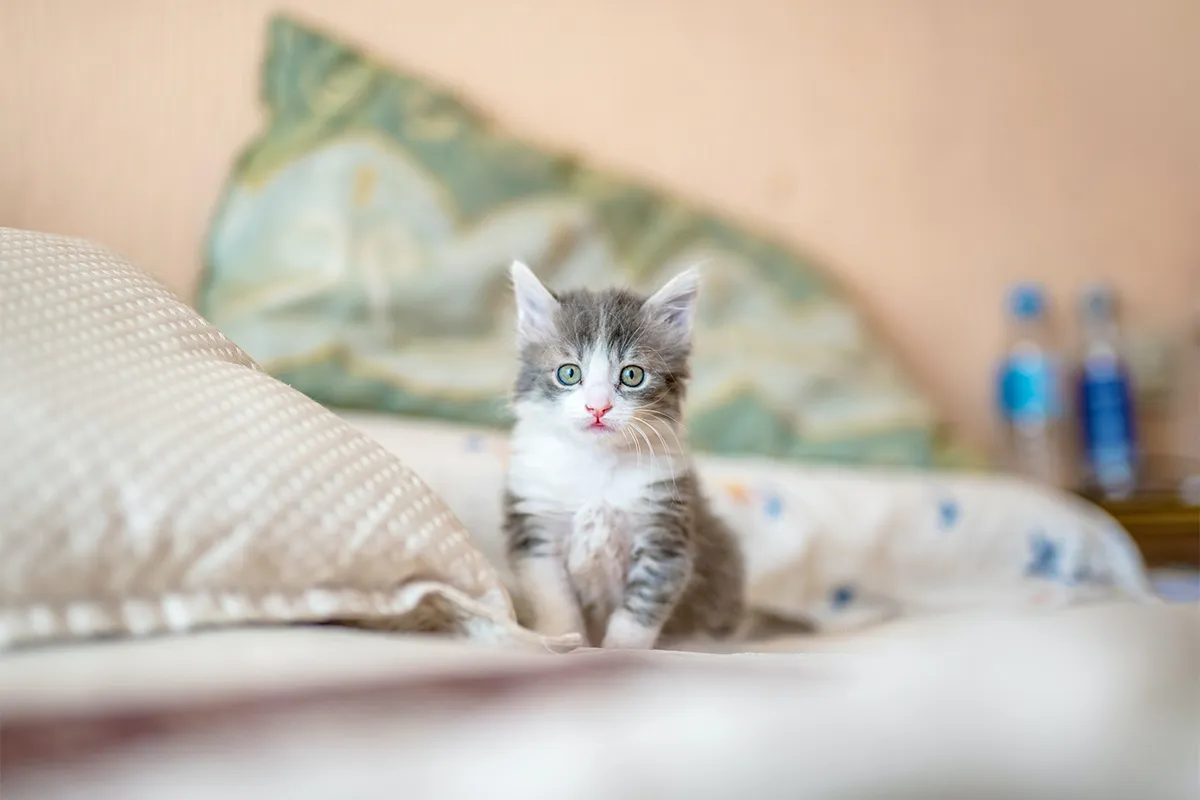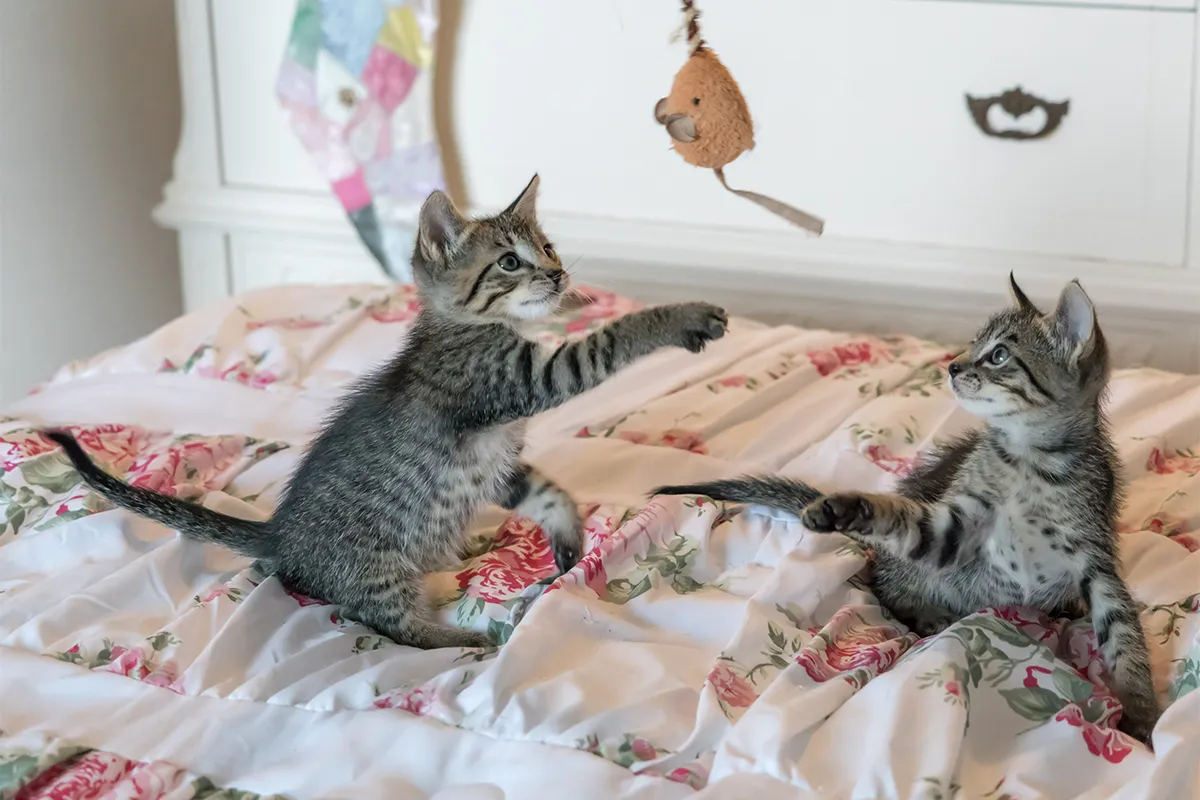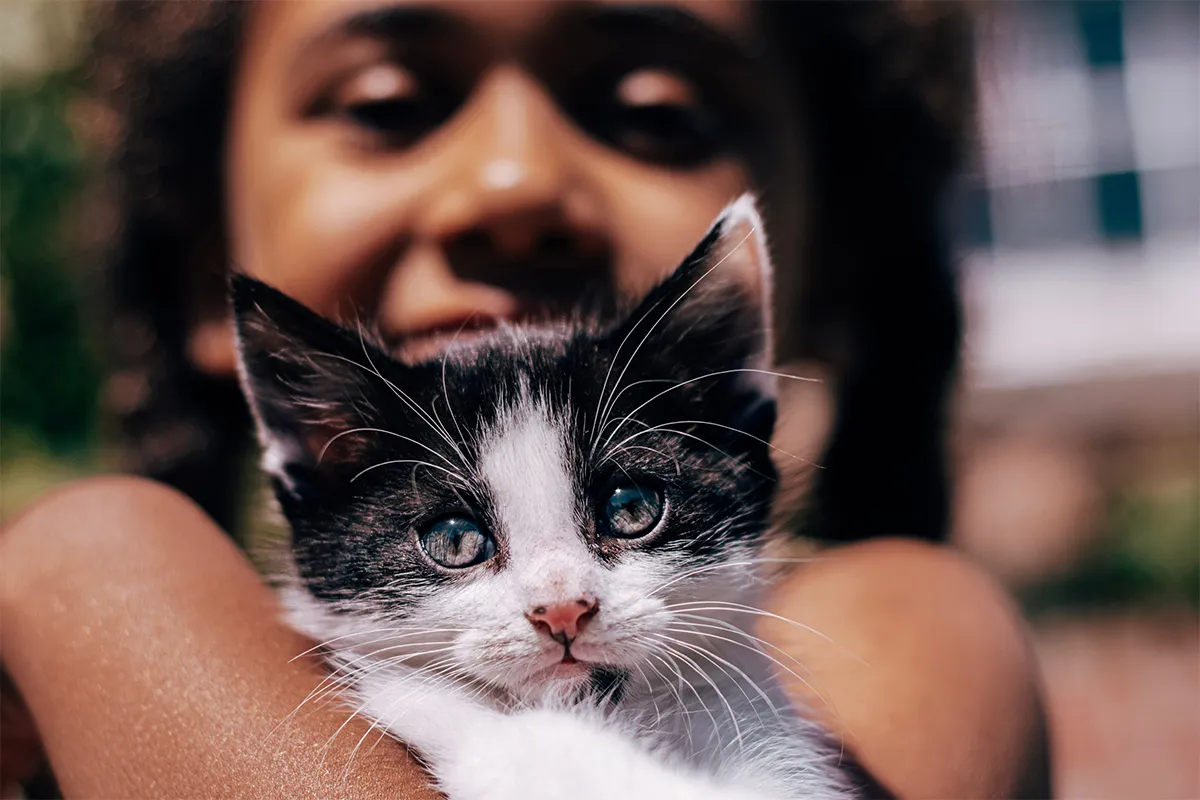Bringing a kitten into your home comes with the responsibility of instilling proper behavior for a pleasant coexistence. Nobody wants a pet that bites or destroys furniture. In this guide, you’ll learn how to educate your kitten from day one to ensure they become a well-mannered and happy companion in your household.
Table of Contents:
- Welcoming Your Kitten Home
- Training Your Kitten to Use Scratching Posts and Toys
- Teaching Your Kitten Not to Scratch or Bite
- Addressing Your Kitten’s Playful Behavior
- Keeping Dangerous Areas Off-Limits
- Positive Reinforcement in Kitten Training
- Play and Mental Stimulation

Welcoming Your Kitten Home
The initial hours of your kitten’s arrival are crucial. Show your new furry friend affection to establish trust and encourage obedience. Gentle petting and kind words will make your kitten purr, a sign that they already consider you part of their family. Ensure your kitten knows the location of their toys, bed, food and water bowls, and litter box right away, and always provide clean water.
Training Your Kitten to Use Scratching Posts and Toys
Having a scratching post from day one is advisable. Encourage your kitten to use it to maintain their well-being. Your kitten will learn to sharpen their claws on the post when you’re around, which should deter them from scratching furniture. Additionally, provide toys to stimulate their natural hunting instincts, such as cloth mice, balls, and feathered toys. Playing interactive games can further engage your kitten’s playfulness.
Teaching Your Kitten Not to Scratch or Bite
Kittens are prone to playfully biting and scratching hands, but it’s essential to curb this behavior early on. A firm and clear “No!” while protecting your hands is usually enough to convey your message. This prevents your kitten from becoming a habitual biter or scratcher.
Addressing Your Kitten’s Playful Behavior

Kittens have a natural inclination to playfully pounce and ambush, a behavior that typically fades as they grow. To avoid painful encounters, gently discourage these actions, so your kitten learns that you won’t be a passive target.
Keeping Dangerous Areas Off-Limits
As part of your kitten’s education, ensure the kitchen is off-limits. This is critical for safety, as they could get injured, and it prevents them from consuming inappropriate food. Keep dangerous items like knives and hot appliances out of their reach. For this, a simple “No” won’t suffice; it’s better to prevent access to the kitchen entirely.
Positive Reinforcement in Kitten Training
Kittens can be mischievous, especially during their adolescent phase. To correct their behavior without violence, use non-violent reprimands when you catch them in the act. Timing is crucial. For example, if your kitten is scratching the couch, gently hold them near the damaged area and say “No!” firmly. This approach helps them understand that their behavior is unacceptable.
Play and Mental Stimulation
Don’t overlook the importance of mental stimulation and play. Playing with your kitten and engaging them in games that require them to think will aid in their education. Consistency and positive reinforcement are essential for ensuring your kitten comprehends the behaviors you want to instill.
In conclusion, training a kitten requires patience and consistency. By starting early and using positive reinforcement, you can raise a well-behaved, happy feline companion that brings joy to your home.


